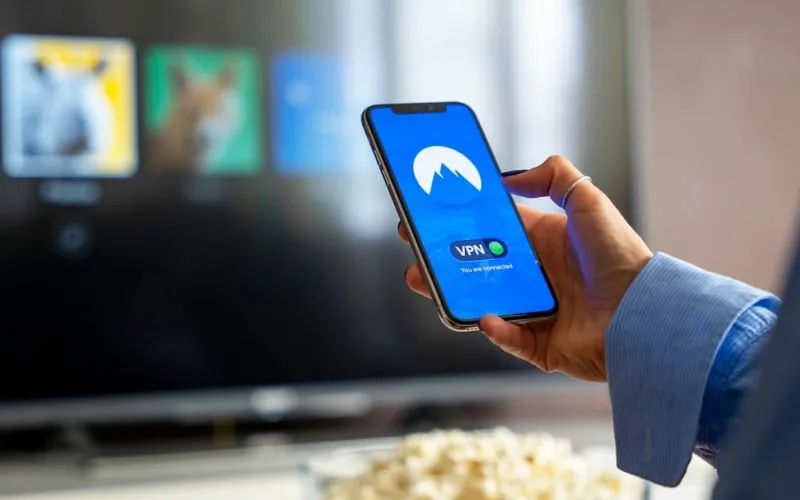Table of Contents
ToggleIn a world where video calls have become the new normal, connecting with friends and family should be as easy as pie—unless you’re trying to bridge the gap between iPhone and Android. Picture this: you’re all set for a virtual hangout, but your friend’s iPhone is giving you the cold shoulder. Frustrating, right? Fear not!
With a few simple tricks up your sleeve, you can turn that tech dilemma into a smooth conversation. Whether it’s to share a laugh or catch up on the latest gossip, knowing how to video call from Android to iPhone is a game changer. Get ready to break down those barriers and ensure your next call is just a tap away. After all, who needs a fancy coffee shop when you can chat from the comfort of your couch?
Understanding Video Calling
Video calling represents a significant advancement in digital communication. Various platforms enable users to connect visually through mobile devices. The process allows users to interact face-to-face regardless of their location. Multiple applications facilitate video calls between different operating systems.
Popular options include Zoom, Skype, Google Duo, and Microsoft Teams. Each application offers unique features catering to diverse user preferences. For instance, Google Duo prioritizes ease of use, while Zoom supports larger groups. Platforms use various protocols to maintain video quality, ensuring seamless interactions.
Compatibility remains crucial when selecting a video calling application. Users on iPhone can interact with Android users if both parties use compatible apps. Ensuring both devices have stable internet connections enhances call quality. High-speed Wi-Fi or reliable cellular service provides a more stable experience.
Security features also play a vital role in video calling. Users should look for applications with end-to-end encryption to protect privacy. Reviewing app ratings and privacy policies can help users make informed choices.
Adjusting settings may improve usability as well. Allowing access to the camera and microphone simplifies the calling experience. Users can familiarize themselves with each application’s interface for smoother navigation.
Understanding these aspects can help users choose the right video calling method. Embracing technology enhances communication with friends and family across device boundaries. Familiarity with app functionalities leads to a more enjoyable video calling experience.
Popular Video Calling Apps
Many video calling applications bridge the gap between iPhone and Android users. Here are some widely-used options that facilitate seamless communication.
App 1: Zoom
Zoom stands out for its versatile features and user-friendly interface. It offers high-definition video quality and accommodates large group calls, making it ideal for both casual chats and professional meetings. Users can easily join meetings via a link, ensuring cross-platform compatibility. The app includes features like screen sharing and virtual backgrounds, enhancing the overall experience. Many professionals favor Zoom due to its robust security measures, including end-to-end encryption for meetings.
App 2: Skype
Skype is a long-standing solution for video calls and remains popular for its reliability. Users appreciate its ability to connect people through instant messaging and voice calls in addition to video. The app supports group calls with multiple participants, allowing friends and family to see each other simultaneously. Notable features include call recording and live subtitles, which enhance accessibility. Skype’s integration with other Microsoft services further benefits those familiar with the Microsoft ecosystem.
App 3: Google Duo
Google Duo emphasizes simplicity and high-quality video calls. It operates smoothly on various devices, making connections effortless. The app includes a unique feature called “Knock Knock,” which allows users to preview incoming calls, creating a more personal connection. Group calling supports up to 32 users, enabling larger gatherings. Security is a priority, as Google Duo employs end-to-end encryption, ensuring that conversations remain private and secure.
Step-by-Step Guide
This section provides straightforward instructions for making video calls from an Android device to an iPhone using popular video calling apps.
Setting Up the App
Begin by downloading a video calling app on both devices. Zoom, Skype, Google Duo, and Microsoft Teams are excellent options. After installation, create an account using email or phone number. Some apps only require a simple sign-in process. Ensure both users are connected to a stable Wi-Fi or mobile data network for optimal performance. Next, check permissions to allow camera and microphone access. One user can directly invite the other through the app or share a join link.
Making the Video Call
Initiate the video call by selecting a contact within the app. Users should look for a video call option, often marked with a camera icon. Clicking on this icon will prompt the connection. If using Google Duo, the “Knock Knock” feature allows the other person to see a video preview before answering. It’s essential to ensure both devices are prepared and operational before dialing. After connecting, users can enjoy smooth video communication by adjusting settings as needed during the call.
Troubleshooting Common Issues
Users might encounter issues during a video call between an iPhone and an Android device. Identifying the problem is the first step toward resolution. Check the internet connection on both devices. A weak connection can lead to poor video quality or dropped calls.
Confirm that the latest version of the app is installed. Older versions may not support newer features or could have bugs that affect performance. Restarting the app often resolves minor glitches. Users should close and reopen the app to refresh its functionality.
Verify that permissions for camera and microphone access have been granted. Denying these permissions can prevent initiation of a call. Close other applications that use bandwidth during the video call. Limiting resource usage can enhance overall performance.
If a user cannot connect, ensure that both parties have added each other as contacts within the app. Not being connected can lead to call failures. Network firewalls may also block video calls. Switching to a mobile network instead of Wi-Fi can help in these instances.
Investigate whether the app has server issues. Outages can disrupt service temporarily. Checking the app’s official website or social media channels can provide updates on such occurrences. If problems persist, uninstalling and reinstalling the app may resolve deeper issues relating to settings or configurations.
Follow troubleshooting guidelines specific to each app. Guidelines provided by Zoom, Skype, Google Duo, or Microsoft Teams offer further assistance for unique scenarios. Seeking support from the app’s help center can also provide users with tailored solutions.
Video calling between iPhone and Android users doesn’t have to be a hassle. With the right apps and a few simple steps, anyone can connect effortlessly. Embracing platforms like Zoom, Skype, and Google Duo not only enhances communication but also bridges the gap between different operating systems.
By following the outlined tips and troubleshooting methods, users can enjoy seamless virtual interactions. Whether it’s catching up with family or collaborating with colleagues, video calls offer a valuable way to stay connected. With a little preparation and the right tools, anyone can make their next video call a success.





